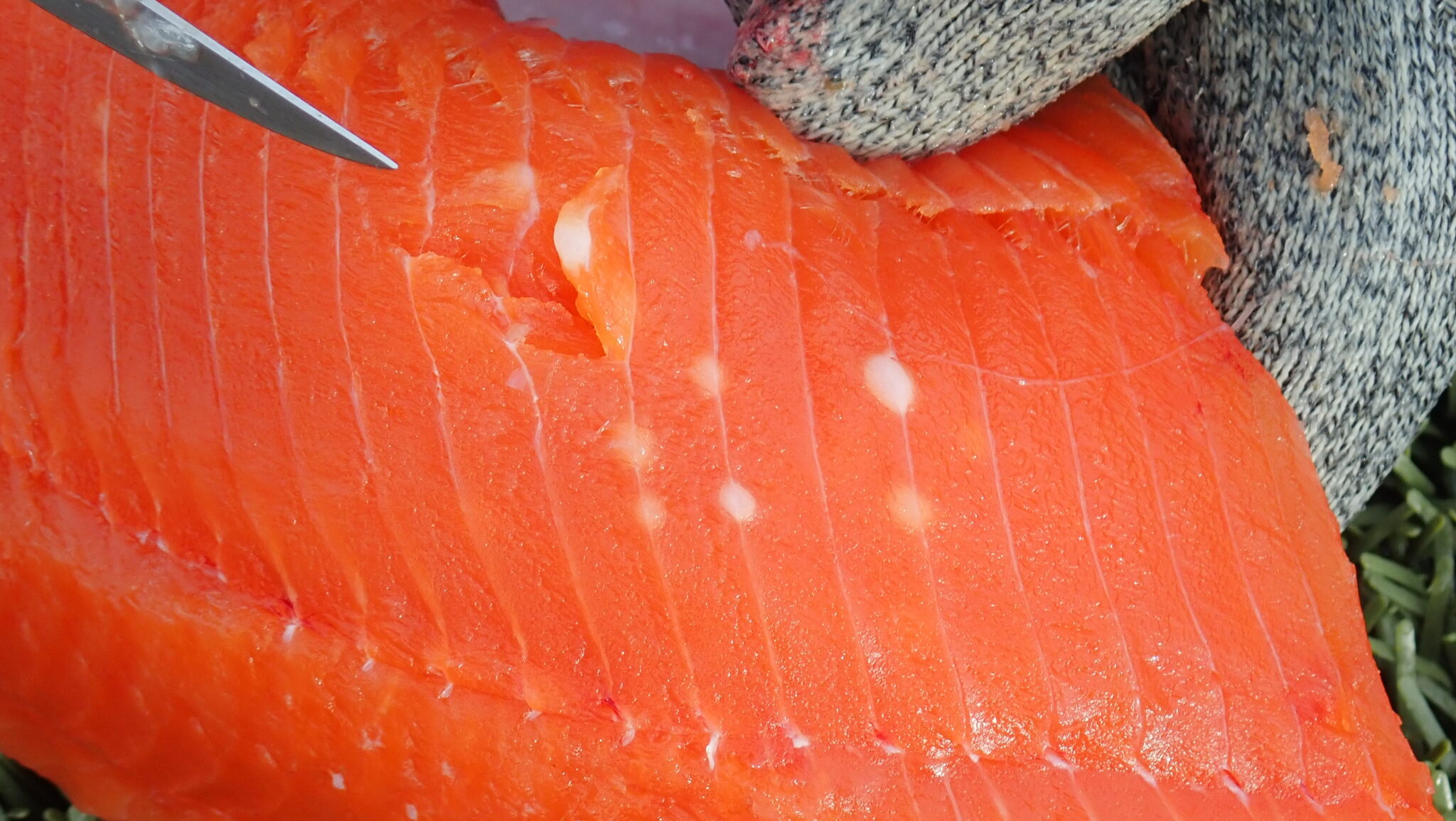One of the great things about my annual trip to the Aleutian Islands is bringing back Roe and Fish. The camp has a full size Freezer and given the huge yields of fish on the river, we are allowed to bring home some fish. I enjoy processing salmon roe and filleting salmon, perhaps it’s the rush of precision cutting with a scalpel. Every fish I clean is an autopsy.
This last trip, Mike pointed out to me some unusual lesions in a small minority of fish we cleaned. It wasn’t till I got home and asked my biologist friend Ken Oda what they were, that I have ever seen or heard of Tapioca Disease. Since its not harmful to humans, Im sure the commercial fisheries dont bother screening for it and most humans who eat salmon have ingested it.

Tapioca Disease
Tapioca Disease is an infection of Henneguya Salminicola, which is a not uncommon parasitic condition known more commonly as “tapioca,” or “rice” disease. Cysts usually are more the size of rice (or smaller). They’re filled with spores that enter the water when the fish dies after spawning. They enter invertebrates, which in turn are eaten by small salmon that then carry the disease throughout their life cycle. Although the parasite is gross an unsightly, it is NOT harmful to the fish or to humans who consume them.
Henneguya is a Metazoan (vs a protozoan) and is more related to Jellyfish, Corals and Anemones. “The spores of this parasite occur in the muscle and under the skin of Pacific salmon causing a condition known as “milky flesh” disease because of the creamy white fluid containing spores that oozes from the cysts (pansporoblasts) during filleting. It is also known as “tapioca” disease from the many small round spore containing cysts in the flesh.” Fish mortality from Henneguya targeting the flesh has not been reported and although the cysts in the flesh are unsightly when present in large numbers, there are no human health concerns associated with Henneguya according to Alaska Fisheries Biologists.
Despite the lesions being safe to consume, we donated all the fish with Tapioca Disease to tegh Bears and the Eagles. All the fish we brought back were free of any lesions – another advantage to catching and cleaning what you eat.


